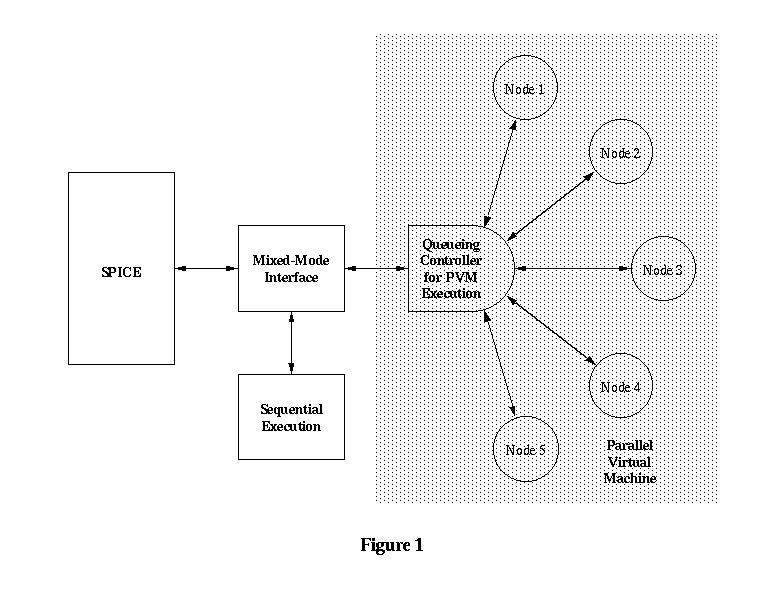 Return
to Top
Return
to Top
In order to reduce the overall user time per circuit iteration, the numerical devices (i.e. the lower level Newton iterations) can be solve on different nodes on a network of machines. Because each device simulation is an independent unit, parallelization is relatively trivial.
The mixed-mode interface contains two mechanisms by which the parallel simulations are executed. The most basic of these algorithms utilizes standard Unix sockets. A more elegant mechanism involves PVM (Parallel Virtual Machine) which allows a heterogenous network of computers to act like a parallel machine [5]. Figure 1 shows a block diagram of how PVM is utilized.
The mixed-mode interface spawns a queueing process on a node of the virtual machine. This process ascertains the number of nodes that can be used for a device simulation. Whenever the interface program needs solutions from a number of numerical devices, it sends a request to the queueing program which then executes the device simulations on the available nodes. Once the device simulations are complete, the queueing program sends back the solutions to the interface. As a result, the computational load on the nodes is optimized.
